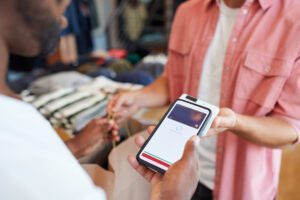<?xml encoding=”utf-8″ ?????????>
The global payment market is growing while UK banks are ordering less cash, indicating the growing popularity of cashless payments.
With mobile payments rising, there are strong indicators that the UK is rapidly shifting away from physical payment options, preferring the simplicity of mobile payments. This is especially prevalent in London as commuters make the most of quick-scan phone apps to travel through the city, according to Jeremy Baber, CEO, Lanistar.
As cash demand dwindles, so has the growth in the value of bank notes. Recent statistics from the Bank of England show a reduction in the value of fifty-pound notes by – 17.07%. Similarly, ten-pound notes have reduced by – 6% and five-pound notes by – 0.2%. As a result, the value of all banknotes in circulation has dropped from £33697 million to £12115 million. The demand for banknotes is not what it was pre-pandemic, with banknote value decreasing by 50% from 2021, demonstrating overwhelming evidence that the UK is indeed taking strides towards a cashless society.
Jeremy Baber, CEO of Lanistar, said: “Cash use is diminishing yearly, and this is a clear indicator that consumers and businesses are transitioning towards a digital payment revolution in the UK. It’s no secret that in recent years, fewer and fewer people tend to carry physical cash thanks to chip and PIN options and contactless card payments. Now, making contactless purchases via mobile phone is the next natural evolution of this process and is quickly becoming the norm.”
A recent report from ResearchAndMarkets has claimed that the global mobile payment market will grow at a compound annual growth rate of over 27% between 2021 and 2026, reflecting their increasing popularity. In the UK, the rise in the use of digital payment options and increased simplicity for businesses has resulted in customer service-focused industries adopting digital-first policies. Holiday destinations such as Centre Parcs no longer accept physical cash, while supermarkets have introduced card-only self-service machines to keep up with the digital payments demand.
Baber concluded: ” More and more people are favouring the speed and convenience that digital payment apps bring. Contactless card payments were once a huge step forward, but now, people can pay with their phones and watches even carrying a wallet is no longer necessary. With Gen Z and Millennials continuing to drive digital payment adoption and being set to become the majority consumer, I have no doubts that the payment landscape will continue to adapt.”










